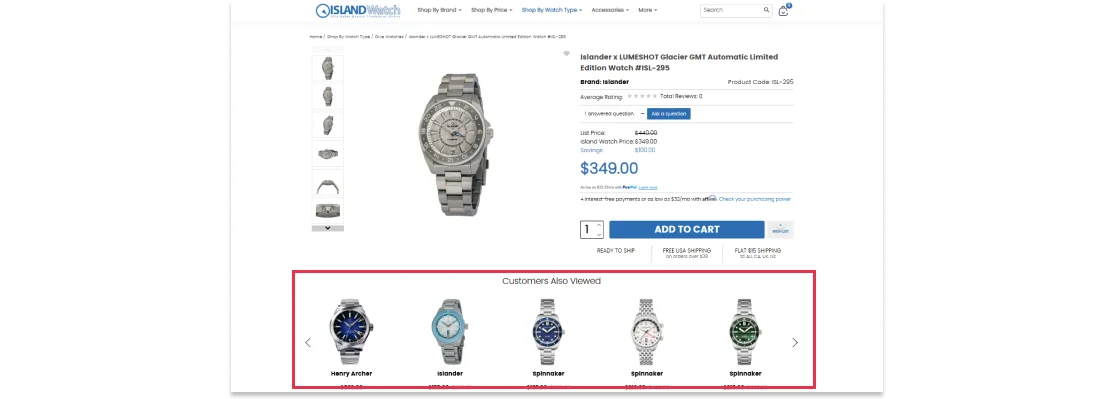
Your website may have worked well a few years ago, but what brought success in 2020 could be holding you back in 2025. Technology evolves fast. Customer expectations shift even faster. If your online store isn’t keeping up, every day means lost sales.
Adopting the right eCommerce strategies for small business 2025 isn’t about chasing every new trend. It’s about building enough flexibility into your business so you can adapt to change without rebuilding your entire site every few years. In this guide, you’ll find practical steps to make your store competitive in the months ahead, no matter what the market throws at you.
Speed Is No Longer Optional
Slow websites lose sales. Customers expect instant results. If your site takes more than a few seconds to load, people leave and shop elsewhere. Google also ranks fast sites higher. That means slow pages don’t just frustrate shoppers; they also disappear from search results.
Test your site with Google PageSpeed Insights. Compress large images and remove old plugins you don’t use. If your hosting is out of date, upgrade. Every second you shave off load times keeps more potential customers on your site. These changes are simple but can mean the difference between a sale and a bounce.
Mobile Shopping Is the Default

Most people now buy from their phones. If your store isn’t built for mobile, you’re invisible to half your customers. A mobile-first site is not the same as a desktop site that shrinks to fit a small screen. Start with your phone. Try to make a purchase. If the process feels clunky or frustrating, your customers feel it too.
Make buttons large enough for any finger. Text should be readable without zooming in. Streamline checkout to a few quick steps. Remove pop-ups that cover the screen. Review every product page and cart on an actual device, not just on your laptop. Small fixes to your mobile site can have an immediate impact on your conversion rate.
Modern Payment Options Matter
Customers expect a smooth, secure payment process. Beyond credit cards, you should offer PayPal and at least one digital wallet like Apple Pay or Google Pay. Not everyone is comfortable entering credit card details, especially with smaller stores. Alternative payment options build trust and increase completed sales.
Consider adding a buy now, pay later option if your average order size justifies it. These options can increase average cart values and lower cart abandonment, but stick to what your customers actually use. Keep your checkout page simple and display security badges clearly. Even the appearance of trust matters as much as real security to customers ready to buy.
Stay Current With Your Platform
eCommerce platforms age quickly. If your system hasn’t seen a major update in years, you’re probably missing out on features and security updates your competitors have. Warning signs include limited integrations, mobile issues, slow load times, or a lack of new features.
Evaluate your platform’s recent updates and roadmap. If nothing has improved in the last year, research alternatives. Don’t wait until your system becomes a roadblock. Planning ahead for a platform migration, when you have time and control, is far easier than rushing after a problem forces your hand.
UX Trends Worth Adopting
Today’s eCommerce experience is about more than just products. Customers expect easy navigation, quick load times, and intuitive design. Personalization is key. Tools like AI-powered recommendations, product quizzes, and saved wish lists help shoppers feel seen and understood. Augmented reality lets buyers “try before they buy,” building confidence for higher-ticket purchases.

Clean layouts and clear calls-to-action should guide visitors from browsing to checkout. Remove unnecessary steps and avoid design clutter. Offer chat or live support for questions. Customers want answers now, not an email response tomorrow. These are all essential eCommerce strategies for small business 2025 that build real engagement.
Prioritize Accessibility and Compliance
Inclusive design is a must, not an afterthought. Accessible websites reach more customers and avoid legal headaches. Features like screen-reader compatibility, keyboard navigation, and clear contrast help everyone shop with ease. Regularly test your site for accessibility, just as you do for mobile or speed. A store that works for all users builds a better reputation and wider audience.
Sustainability and Values Are the New Differentiators
Shoppers care more about who they buy from. Highlight your business values. Offer clear information about ethical sourcing, sustainable packaging, or carbon-neutral shipping if you use them. Even small changes, like recycled packaging or giving back to a local charity, can turn one-time buyers into loyal supporters.
Don’t bury this information on an About page. Bring it into your product descriptions, banners, and at checkout. People support brands that reflect their own values.
Social Commerce: Meeting Customers Where They Shop
More shoppers are making purchases directly through platforms like Instagram, Facebook, and TikTok. Social commerce isn’t just about sharing content or running ads—it’s about creating a frictionless shopping experience inside the social apps your customers use every day. Features like product tags, shoppable posts, and in-app checkout are now essential, not optional.
For small businesses, social commerce levels the playing field. You can showcase products in real time, use influencer partnerships to reach new audiences, and turn followers into buyers without requiring them to leave the app. These are the eCommerce strategies for small business 2025 that deliver sales wherever your audience shops.
Customers want to discover and buy products without switching tabs or filling out lengthy forms. The easier you make it to buy, the more sales you’ll see. Investing in social commerce today ensures your store remains visible and relevant wherever your customers are shopping next.
Conclusion: Move Forward With Confidence
Your website is open 24/7. It’s either turning visitors into customers or losing sales to competitors. eCommerce strategies for small businesses in 2025 are about future-proofing your store, staying ready for change so you don’t fall behind. Even small updates—faster speeds, better mobile layouts, more payment choices—can bring you closer to the results you want.
Don’t wait until you have to rebuild everything. Pick one improvement and get started this week. Consistent, simple updates will keep your business relevant and growing through 2025 and beyond.

 Eashan Mehta
Eashan Mehta




